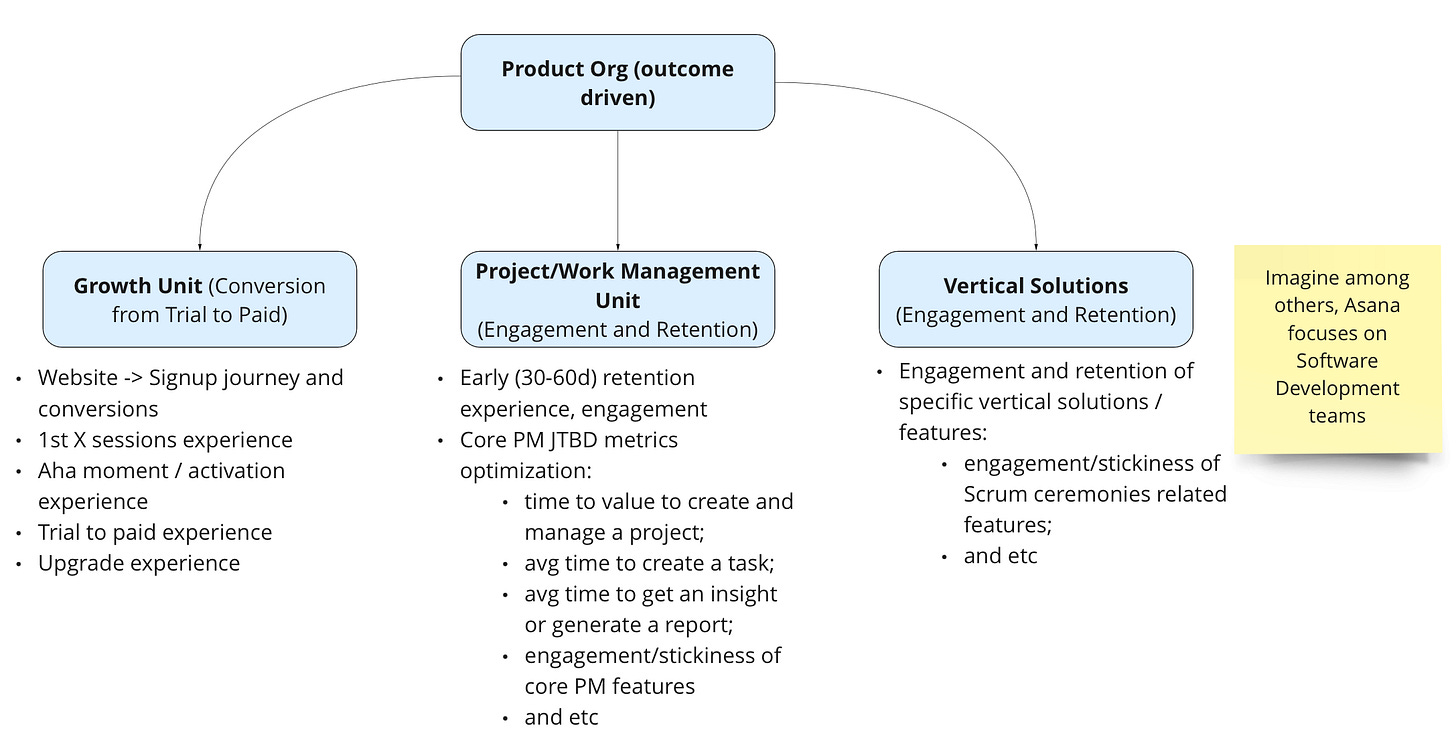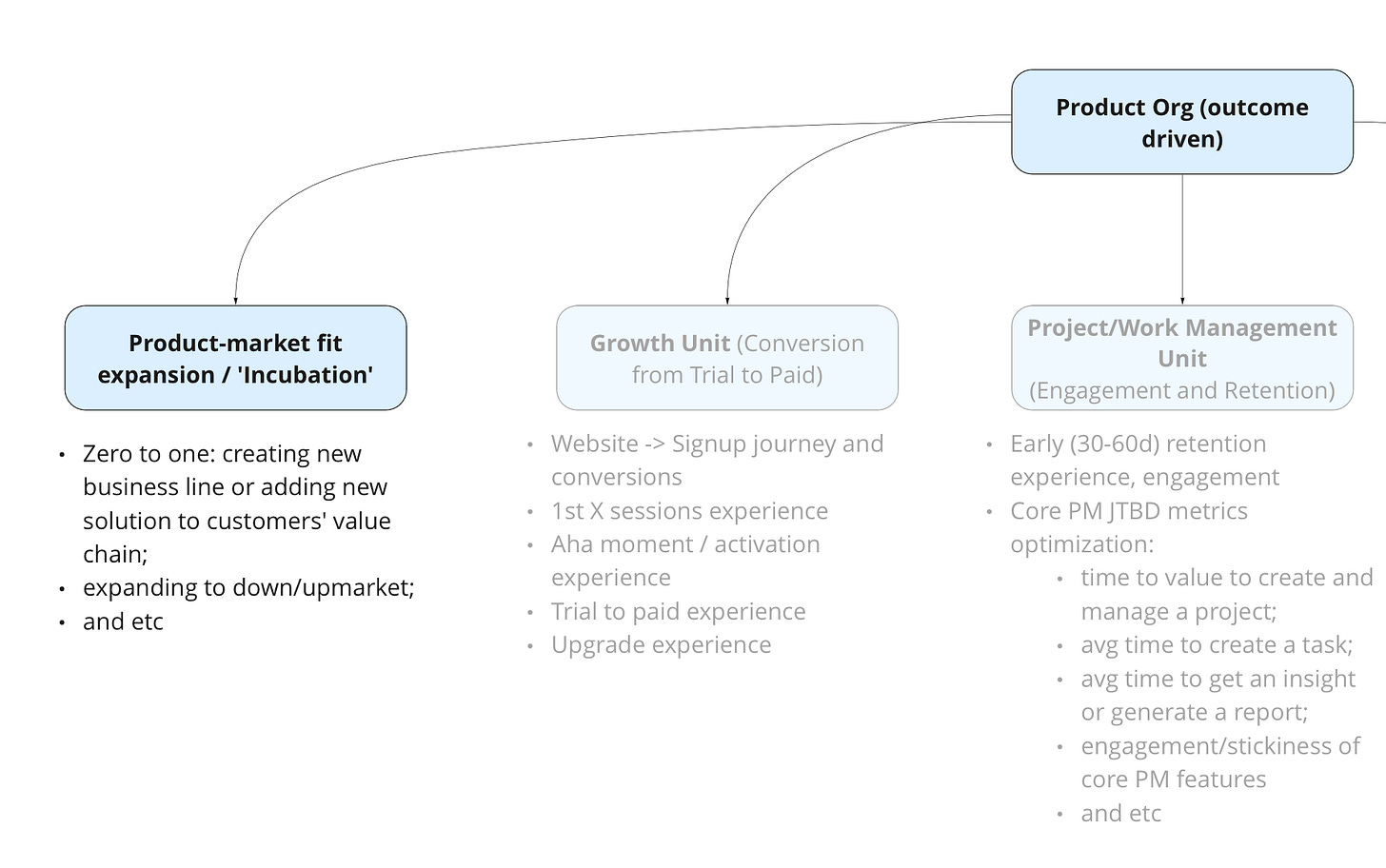How to Structure your Product Organization
Recently I’ve been thinking a lot about Product Organizational structures and want to share my quick thoughts here.
As a company's CPO / Product Leader (PL), at some point of time you need to think very carefully how your product organizational structure will be designed. Since structure determines functional capabilities (compare how Burj Khalifa and your office building have been built - I imagine they have very different structural foundations), PLs should be thoughtful which product organizational structures they build.
Feature-based structure
Typical structure for B2B SaaS startups (and I imagine for other business models as well) is feature-based team organisation. Say you’re leading the product team at famous CRM company. In the scenario above you would probably have separate teams that work on:
lead/contact/account lists experience;
lead/contact/account details page experience;
analytics and reporting;
outreach capabilities;
and etc
This is probably by far the most common approach to structure product teams that has the most drawbacks:
feature teams are hard to evaluate objectively because they’re not defined to drive specific outcomes;
teams / units are not really owning the entire customer experience of the JTBD;
it takes many calories for PMs to map how exactly their feature ‘scopes’ can drive value for the business this quarter;
PMs get ‘married’ to their ‘scopes’ and might overlook when their investments will bring diminishing returns and ROI will start decreasing. This is especially dangerous when product org is not agile and keep running the same structure for years.
typically leads to unequal resourcing distribution that ultimately damages the growth of the business: say as a business you need to invest more resources into optimising the funnel and drive more acquisition but your growth unit has only 2 teams - what do you do? Do you dismantle a team from other units to reallocate resources? Feature team structure doesn’t typically allow to do that easily.
Outcome-based structure
The more effective (but probably the one that’s harder to pull off) is outcome based product org structure where PMs would own specific product metrics that are meaningful to the business growth.
Outcome-based product org structure works best for companies that understand their business levers and where product work maps to those levers.
Say you’re working at Asana or Monday.com. These are well-known players in project/work management space. You have roughly 20 PMs and scrum teams and you’re designing their product organization. Businesses like Asana are essentially land and expand biz that enjoy product-led growth (the famous PLG 😄) motion and acquire prospects through marketing channels (SEO, paid advertising, etc), offer a freemium model and most promising prospects are contacted by inside sales teams.
Your Asana outcome-based product org structure might look as follows:
This is oversimplification but the main goal of the outcome-based structure is to deliver the following benefits:
PMs drive specific product metrics (that should be tied to business outcomes);
Product Leads foster better business mindset for PMs which ultimately creates more effective product org;
easier to hold PMs accountable for their decisions and value they create;
right product priorities get proper resourcing and ‘funding’;
More agility with how the product org can reallocate their focus areas;
PMs own more broader customer experience instead of siloed feature areas.
There’re some pitfalls though:
Letting maintenance tasks fall through the cracks given no team owns specific features;
PMs have to become more flexible in domain areas as they will start being more flexible w/ areas of product they can drive outcomes with;
Tendency to define to outcome metrics at too high level which leads for PMs in unclear guidance on how achieve the goal.
Another problem with this structure is that its focus is on optimizing what already exists, rather than on creating new “step-functions” of value that didn’t exist before.
If the business has already taken significant market share within current product-market fit, Product Leader has to create a function within a product org where they can invest into expanding their product-market fit.
Remember: there’s no right or wrong product structure 😉. But when designing one you should account for pros and cons of any approach and start from understanding what kind of outcome are you trying to achieve when designing your product organization.




